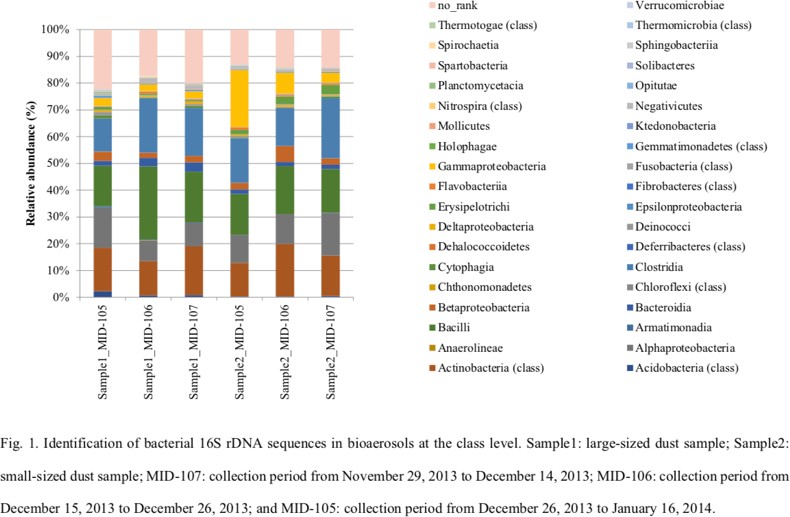Panyapon Pumkaeo
Gifu University, Japan
Title: Identification of bioaerosols from environmental samples in the AIST, Tsukuba, Japan
Biography
Biography: Panyapon Pumkaeo
Abstract
The bioaerosols are the atmosphere particles, mists or dust of µm range, associated with metabolically active or inactive viable particles. They contain living organism’s included microorganisms such as viruses, bacteria, and fungi also plant material as well as pollen. Next Generation Sequencing (NGS) is a novel method of DNA sequencing that quickly and efficiently read the underlying sequence of an organism by means of massively parallel sequencing. The aim of this study is identifying organisms which contained in environmental samples by using NGS. This study monitored the environmental sample (bioaerosols) from November 2013 to January 2015 for 50 days using air samples were collected at AIST, Tsukuba, Japan. Samples were bio-analyzed using a next-generation sequencing method. In this study, we used two NGS platform, GS FLX+ (Roche 454 sequencing) and Illumina Misep. The sample was detected plants, eukaryotes and bacteria. The sample was divided into two subgroup subgroups according to the size of its bioaerosols, large subgroup contains bioaerosols whose diameter is bigger than 3.3μm, and small subgroup contains those smaller than 3.3μm.The most abundant bacteria in several samples were of the Actinobacteria (class), Alphaproteobacteria, Bacilli and Clostridia. For the animal detection using internal transcribed spacer 1, only uncultured fungi were detected in more than half of the hits, with a high number of Cladosporium sp. in the samples. For the plant identification, the ITS1 information only matched fungal species. However, targeting of the rbcL region revealed diverse plant information, such as Medicago papillosa. In conclusion, traces of bacteria, fungi, and plants could be detected in the bioaerosols, but not of animals using those primers.
Recent Publications
1. Choi, Jae-Hoon, Ayaka Kikuchi, Panyapon Pumkaeo, Hirofumi Hirai, Shinji Tokuyama and Hirokazu Kawagishi (2016) Bioconversion of AHX to AOH by resting cells of Burkholderia contaminans CH-1. Bioscience, Biotechnology and Biochemistry 80 (10):2045-2050.
2. Panyapon Pumkaeo. 2018. "Identification of Bacteria from bioaerosl at AIST, Tsukuba, Japan." Proceedings of International Symposium on Animal Production and Consevation for Sustainable Development 2018 UGSAS-GU & BWEL Joint Poster Session on Agricultureal and Basin Water Environmental Sciences 2018:P18.


